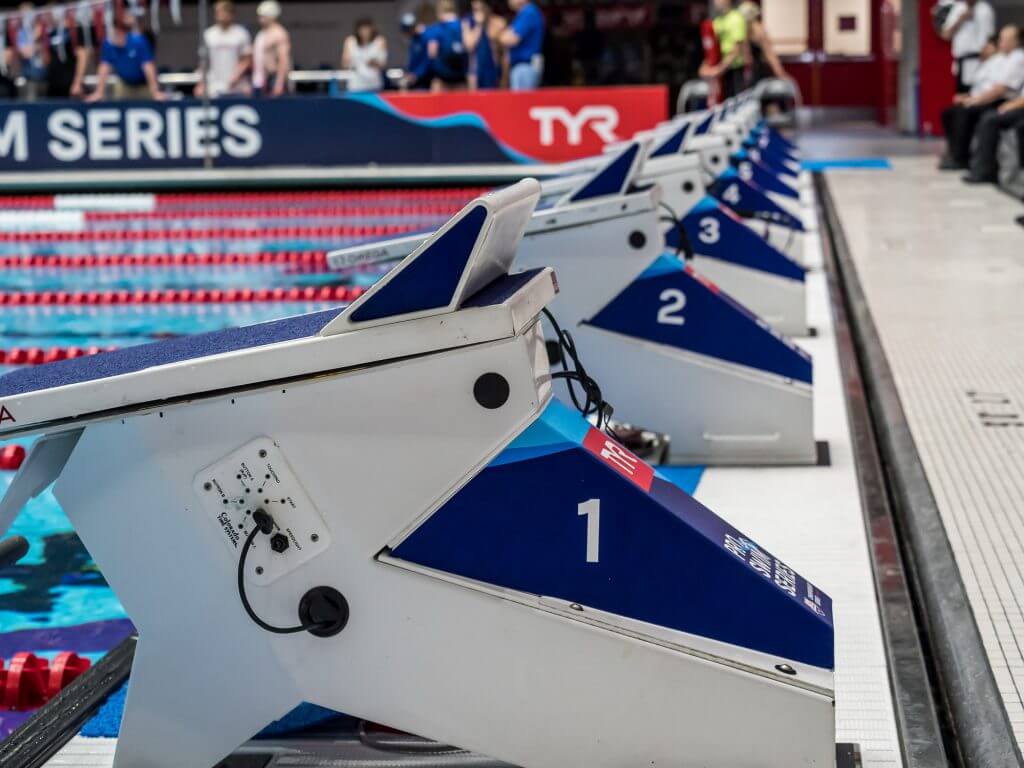Motivational Monday: How Can Swimmers Benefit from Visualization?

Motivational Monday: How Can Swimmers Benefit from Visualization?
As many swimmers are currently in the throws of championship season, here is one way to rehearse a race without getting into the water.
Visualization is, quite simply, sitting yourself down, closing your eyes, and thinking (or rather, dreaming) about your swim. This mental rehearsal is a cognitive technique to mentally stimulate certain aspects of an athlete’s performance. It involves attempting to create clear images of desired outcomes and encompasses other elements such as executing skills, implementing strategy, and regulating emotions.
Tips for Visualization
Visualization is not a new form of competition preparation; many past and current athletes utilize mental rehearsal to supplement their training in the pool. Even the Greatest of All Time, Michael Phelps, used visualization to prepare for race and to stay calm under pressure.
- Relax: Learn different breathing and relaxation techniques to calm your body down. Deep breathing, progressive muscle relaxation, or meditation can help you achieve a state of relaxation conducive to visualization. Finding a quiet area is also best to help keep a clear mind.
- Set clear goals: Before visualizing, establish clear, specific, and positive outcomes for your performance. Whether it’s improving a specific skill, winning a race, or going a best time, having well-defined goals will guide your visualization practice.
- Use All Your Senses: Incorporate all your senses into your visualization. Visualize how it feels to execute your stroke perfectly, smell the chlorine from the pool, hear the sounds of the water or crowd, and feel the physical sensations you associate with your swim.
- Rehearse Different Scenarios: Visualize yourself encountering different situations and challenges that you may face during competition. By doing this, you can mentally rehearse your responses and strategies for overcoming obstacles or setbacks.
- Don’t let your mind wander: It is very easy to become distracted or let your mind stray away from the task at hand, especially when first trying out this mental practice. If your mind does wander, pause visualizing and try to regroup. Sometimes it is also best to start from the beginning if you lose your train of thought.
- Be Consistent: Visualization is not a practice that should be done at the last minute. Try to incorporate visualizing into your daily training routine. As you become more consistent with it, it will be easier to visualize smaller details and make the mental rehearsal feel more real.
Benefits of Visualization
Visualization offers many benefits for athletes, both in terms of performance enhancement and mental well-being.
- Motivation: Visualization allows swimmers to mentally picture themselves achieving their goals. Mentally perceiving success serves as a powerful motivator as it helps drive swimmers to work harder and persevere through challenges.
- Strategic Planning: Visualization helps swimmers mentally rehearse race plans, techniques, and strategies. By visualizing different scenarios and how they should response to them, swimmers can make quick and more effective decisions during competition, which potentially leads to better outcomes.
- Increased Focus and Concentration: Visualization requires swimmers to concentrate on specific details of their swims, such as technique, emotion, and strategy. This focused attention increases concentration skills, which allows the individual to maintain focus during competition and block out distractions.
- Increased Confidence & Stress Reduction: The process of visualization often involves relaxing the body and deep breathing, thus helping swimmers manage stress and anxiety. By practicing visualization regularly, swimmers can learn to stay calm and focused even in high-pressure situations, leading to improved performance under stress. Additionally, taking the time to focus on breathing and increasing overall concentration on a specific moment can help an individual develop a positive mindset that enhances their self-belief and reduces performance anxiety.
All these benefits can help a swimmer achieve their goals, but it is important to note that these cannot be reaped without physical work being done in the pool. When consistent training and visualization go hand in hand, these benefits can be maximized when competition time finally comes around.



